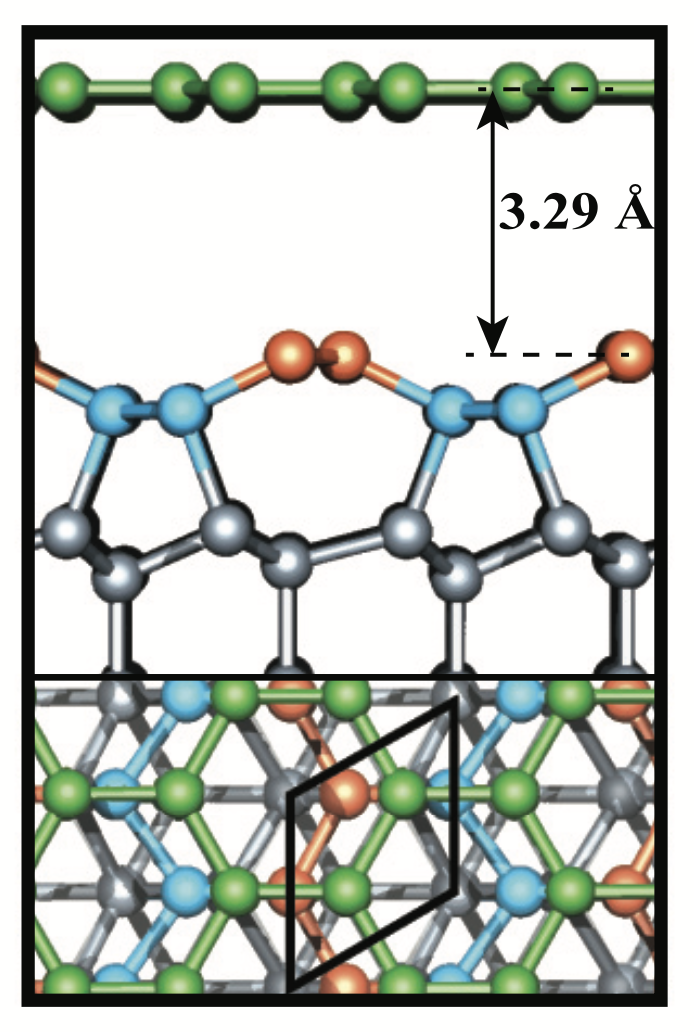 Diamond (111) surface reconstruction and epitaxial graphene interface
Diamond (111) surface reconstruction and epitaxial graphene interface
The evolution of the diamond (111) surface as it undergoes reconstruction and subsequent graphene formation is investigated with angle-resolved photoemission spectroscopy, low energy electron diffraction, and complementary density functional theory calculations. The process is examined starting at the C(111)-(2×1) surface reconstruction that occurs following detachment of the surface adatoms at 920°C, and continues through to the liberation of the reconstructed surface atoms into a freestanding monolayer of epitaxial graphene at temperatures above 1000°C. Our results show that the C(111)-(2×1) surface is metallic as it has electronic states that intersect the Fermi level. This is in strong agreement with a symmetrically π-bonded chain model and should contribute to resolving the controversies that exist in the literature surrounding the electronic nature of this surface. The graphene formed at higher temperatures exists above a newly formed C(111)-(2×1) surface and appears to have little substrate interaction as the Dirac point is observed at the Fermi level. Finally, we demonstrate that it is possible to hydrogen-terminate the underlying diamond surface by means of plasma processing without removing the graphene layer, forming a graphene-semiconductor interface. This could have particular relevance for doping the graphene formed on the diamond (111) surface via tuneable substrate interactions as a result of changing the terminating species at the diamond-graphene interface by plasma processing.
Go back